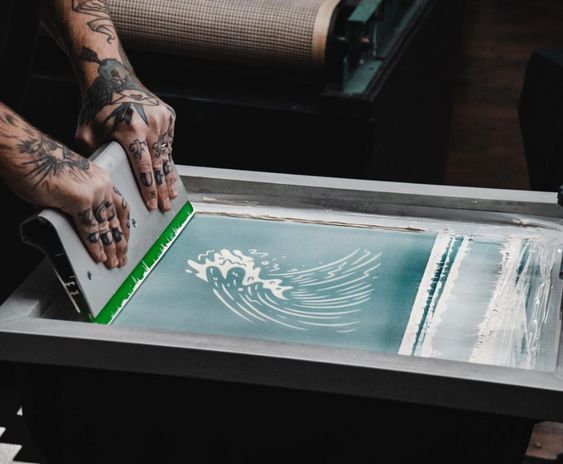How to Start a T-Shirt Printing Business
Are you dreaming of starting your own t-shirt printing business? You’re in the right place! T-shirts are a wardrobe staple for almost everyone, making this a lucrative business opportunity. Plus, who doesn’t love a good graphic tee? This guide will walk you through everything you need to know, from market research to designing, printing, and selling your custom tees. So, grab a coffee, and let’s dive in!
Understanding the T-Shirt Printing Market
Before jumping in, it’s crucial to understand the t-shirt printing market. Start by doing thorough market research. Look at current trends, popular designs, and what your potential competitors are doing. This will help you identify your target audience, whether it’s trendy teens, fitness enthusiasts, or corporate clients needing branded apparel. Also, read about How to Start a Lawn Care Business
Developing Your Business Plan
A solid business plan is your roadmap to success. First, define your business goals. Do you want to create a boutique brand with exclusive designs, or are you aiming for large-scale production? Next, set up your business structure. Are you going solo as a sole proprietor, or forming a partnership?
Financial planning is also key. Calculate your startup costs, including equipment, materials, and marketing. Create a budget and forecast your expected revenue. This will help you stay on track and measure your progress.
Choosing Your T-Shirt Printing Method
There are several t-shirt printing methods, each with its pros and cons.
- Screen Printing: This traditional method is great for bulk orders and produces vibrant colors. However, it’s labor-intensive and not ideal for small runs.
- Heat Press Printing: Perfect for small batches and detailed designs. It uses heat to transfer designs onto the fabric.
- Direct-to-Garment (DTG) Printing: Think of it like an inkjet printer for t-shirts. It’s excellent for detailed designs and small orders.
- Vinyl Cutting: Uses a plotter to cut designs from vinyl sheets, which are then heat-pressed onto t-shirts. Great for simple, bold designs.
Selecting the Right Equipment
Once you’ve chosen your printing method, you’ll need the right equipment. For screen printing, you’ll need screens, squeegees, and inks. Heat press printing requires a heat press machine and transfer paper. DTG printers are expensive but versatile. Vinyl cutting demands a vinyl cutter and heat press.
Don’t forget about software and design tools. Adobe Illustrator and CorelDRAW are popular choices. Additionally, find reliable suppliers for your equipment and materials. Quality tools can make a big difference in your final product. For more information northernreport.ca
Designing Your T-Shirts
Your designs are what will set you apart. Create unique, eye-catching designs that resonate with your target audience. If you’re not a designer, consider hiring one. Platforms like Fiverr and Upwork can connect you with talented designers.
Keep an eye on design trends for inspiration. From minimalist to vintage, knowing what’s hot can help your designs sell. Remember, your designs should reflect your brand’s personality.

Setting Up Your Workspace
Decide whether you’ll run your business from home or rent a commercial space. A home-based setup can save money, but you’ll need enough space for your equipment and inventory. Organize your printing area for efficiency, and ensure it meets safety standards. Proper ventilation, fire safety measures, and ergonomic workstations are important.
Sourcing Quality Materials
Quality matters. Find reliable suppliers for your blank t-shirts and printing materials. Look for high-quality fabrics that feel good and last long. Cotton is a popular choice, but blends can offer benefits like better durability and comfort.
Consider buying in bulk to save money and manage your inventory effectively. Building a good relationship with your suppliers can also lead to better deals and reliable supply chains.
Pricing Your Products
Pricing can be tricky. You want to cover your costs and make a profit, but also stay competitive. Start with a cost analysis. Add up your production costs, including materials, labor, and overhead. Then, research your competitors’ pricing.
Consider offering discounts for bulk orders or promotions to attract new customers. Remember, pricing is also a part of your brand. Higher prices can position you as a premium brand, while lower prices can drive volume sales.
Marketing Your T-Shirt Business
Marketing is essential to get your t-shirts in front of potential customers. Start by building an online presence. Create social media profiles on platforms like Instagram, Facebook, and TikTok. Post regularly and engage with your audience.
Consider collaborations and partnerships with influencers or other brands. Offline marketing strategies, like participating in local events or pop-up shops, can also be effective.
Setting Up an Online Store
An online store is a must in today’s digital age. Choose an e-commerce platform like Shopify, WooCommerce, or Etsy. Create a user-friendly website that showcases your products beautifully.
Pay attention to product listings and descriptions. High-quality photos and detailed descriptions can boost your sales. Don’t forget about SEO to help customers find your store online.
Managing Orders and Customer Service
Efficient order management is crucial for a smooth operation. Use an order management system to keep track of orders, inventory, and shipping.
Good customer service can set you apart from the competition. Respond promptly to inquiries, resolve issues quickly, and aim to exceed customer expectations. Happy customers are likely to return and recommend your business to others.

Legal Considerations
Starting a business comes with legal responsibilities. Register your business with the appropriate authorities. Choose a business name and check if it’s available as a domain name for your website.
Understand copyright laws to protect your designs and avoid infringing on others’ work. Business insurance is also important to protect your assets and operations.
Scaling Your Business
As your business grows, you’ll need to scale up. Consider expanding your product line to include other apparel or accessories. Increase your production capacity by investing in more equipment or hiring staff.
Focus on building a strong brand identity. Consistent branding can help you stand out and build customer loyalty.
Conclusion
Starting a t-shirt printing business can be an exciting and rewarding venture. With careful planning, creativity, and dedication, you can turn your passion for t-shirts into a successful business. Remember, it’s a journey, so be patient and persistent. Happy printing!
FAQs
1. What is the best printing method for beginners?
The best printing method for beginners is heat press printing. It’s relatively easy to learn, cost-effective for small batches, and produces high-quality results.
2. How much does it cost to start a t-shirt printing business?
The cost can vary widely, but you can start a small home-based business for as little as $1,000 to $5,000. This includes equipment, materials, and initial marketing expenses.
3. Do I need a graphic design background to start this business?
No, you don’t need a graphic design background. There are plenty of resources and tools available to help you create designs. You can also hire freelance designers if needed.
4. How can I find suppliers for my t-shirts and printing materials?
Research online, join industry forums, and attend trade shows. Look for suppliers with good reviews and quality products. Building a relationship with your suppliers can lead to better deals.
5. What are some effective ways to market my t-shirt business?
Use social media to showcase your designs, engage with your audience, and run ads. Consider influencer collaborations and participate in local events. Building an online store with good SEO can also drive traffic to your business.




